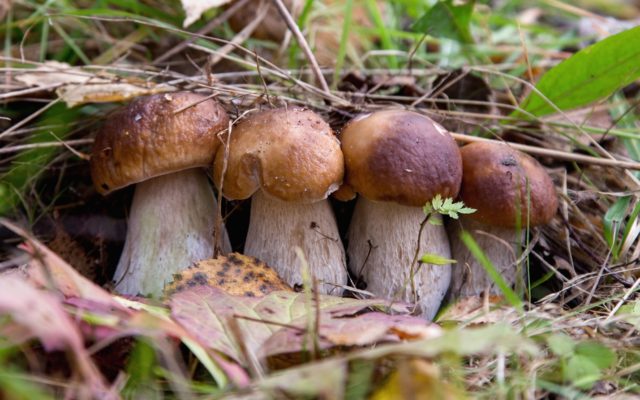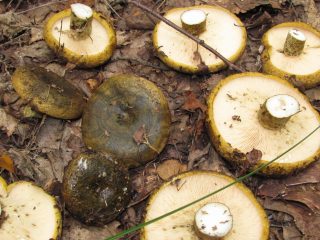Content
Quele's oakberry (Suillellus queletii) is a rare mushroom, which is why not every mushroom picker knows it. And if they do meet it, they avoid it because they consider it inedible. In fact, this is a healthy product, rich in substances and microelements, which are highly appreciated by residents of the Caucasus and the Far East. The species has wide culinary and medicinal uses. Other names are Kele bolet or smoothbore.
What Kele oak trees look like
Dubovik Kele is a representative of higher mushrooms, as it has a mycelium and a fruiting body. Thanks to the first, the mushroom is attached to the ground. It consists of long white threads called hyphae. They can be examined under a microscope.
The oak tree received its name after the scientist L. Kele from France. He was the first to describe this species. In some sources, oakberry is called poisonous, but rather because eating it raw leads to cramps, diarrhea and other intestinal problems.
As a rule, each mushroom has its own doubles, which may not be suitable for consumption. Therefore, it is important to know what a particular mushroom looks like, and it is best to carefully look at the photo.
hat
This representative, which prefers to grow under oak trees, has a brick cap. In young specimens it is in the shape of a ball that closes on a stalk. Subsequently, its edges rise upward, which is why the hat becomes like a pillow.
If there is no rain, the velvety surface of the cap remains dry. After precipitation, mucus appears on it. In old mushrooms it reaches a diameter of 15 cm.
Leg
Kele's oak tree stands out among its relatives with a short (no more than 10 cm) and thick (up to 5 cm in diameter) stem. The middle part is thickened and covered with whitish mycelium. On the yellow leg, growths in the form of reddish scales are noticeable.
Pulp
The pulp is dense, yellow in color, but only until the moment of cutting. It quickly turns blue. The mushroom has a weak aroma and tastes sour.
Spore powder
Bolet Kele is a tubular mushroom. The tubes are reddish-yellow in color and very small. They are yellow inside. If you press on them, they begin to turn blue.
The spores are medium-sized, smooth, and shaped like a spindle. The color of the spore powder is greenish-brown.
Where do Kele oak trees grow?
On the territory of Russia, a large number of Kele boletes can be found in the Caucasus and the Far East.They prefer light oak and deciduous forests. They are less common in conifers or woodlands.
Oak trees prefer acidic, infertile soils where moss grows, grass and fallen leaves exist. Fruiting begins in May and continues until mid-June. Then from August to October, until frosts begin.
They grow in families, sometimes up to 10-12 pieces. Near the Kele oak trees there are:
- chanterelles;
- White mushrooms;
- variegated flywheels;
- blue-yellow russula.
Is it possible to eat Kele oaks?
Kele dubovik is classified as conditionally edible, that is, it can be eaten, but not in its raw form. In a word, heat treatment is required. After boiling, you can prepare various dishes.
False doubles
The Kele bolet has its own doubles. Some of them are quite edible, but when collecting others you need to be careful, as they are toxic and can lead to poisoning and serious problems.
Fechtner's boletus
It has a light cap located on a reddish stem. The spore layer is yellow. It starts to turn blue on cuts and when pressed. It bears fruit in the same places as the Kele oak tree.
Burroughs' boletus
This lookalike has a pale cap with white flesh. It does not turn blue when cut. The mushroom is edible; it is not necessary to boil it first. Grows only in North America.
Satanic mushroom
The flesh of this poisonous representative first turns blue when cut, then begins to turn red. The pores are red, the legs have dots or a mesh pattern of the same color. The cap is whitish or grayish-green.
Collection rules
They begin to collect forest fruits in mid-July until frost. You can collect a large number in one place, since they grow in families.It is best to go to the forest in the morning so that the harvest will last longer.
You should not pay attention to old specimens, as harmful substances have already accumulated in them. After cutting the Kele oak trees, shake off the earth, leaves, and debris. They should lie with their caps down in the basket.
Use
Dubovik Kele is valued for its taste and nutritional value. It is edible, but only after heat treatment. The mushroom is famous for its fleshy pulp with a delicate aroma.
Culinary consumption is varied. The product can be:
- salt;
- marinate,
- dry;
- freeze;
- add to soups and as a filling for cabbage rolls;
- use for mushroom sauces.
Heat treatment does not destroy the beneficial properties of the mushroom. During cooking, it decreases slightly in volume.
Mushrooms are no less valued in medicine:
- Thanks to beta-glucans, Kele oakberries can strengthen the immune system.
- They have anti-inflammatory properties. Regular consumption reduces the risk of developing cancer.
- The presence of amino acids helps improve memory, coordination of movement, and delays the development of atherosclerosis for many years.
Kele oak trees are used to make various balms and tinctures, which are widely used for depression, stress and overwork.
Conclusion
Dubovik Kele is a conditionally edible mushroom. After collection, if there is no time to immediately begin processing, it should be stored in the refrigerator. But only for two days. If the mushrooms are intended to be frozen for the winter, they are first boiled in salted water.


















